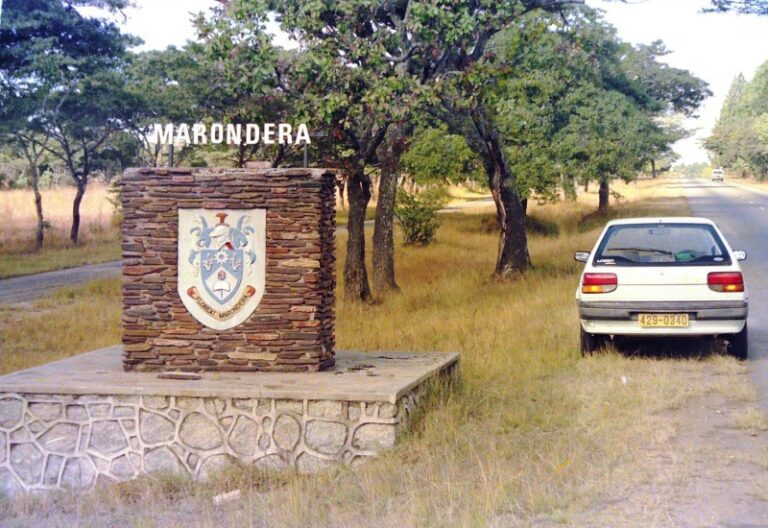
BY TAURAI MANGUDHLA IGNORANCE and lack of political will to impose accountability and transparency in the mining industry is costing the economy hundreds of millions in United States dollars annually in potential revenues through smuggling of precious stones.
Law enforcement agencies and regulatory authorities including politicians and ministers are part of syndicates behind the opaque trade of gemstones which normally end up in Asia, according to watchdog Centre for Natural Resource Governance (CNRG) in their latest report released on Friday.
The report is titled: The Political Economy of the Illicit Coloured Gemstone Industry in Zimbabwe.
These coloured gemstones, excluding diamonds, are smuggled mostly in their raw form, creating a value addition industry outside the country.
This costs the economy significant revenue which could turn around the fortunes of Zimbabwe.
CNRG said existing data on coloured gemstone production, exports and revenue in Zimbabwe was sketchy, and depicted coloured gemstones as a less valuable industry, while hiding critical illicit activities happening behind the scenes.
“There is clear evidence that much of Zimbabwe’s gemstone wealth is mined and traded illicitly.
“The high level of corruption in the country has not spared the coloured gemstone industry where dealers, mine owners and law enforcers form a close web for smuggling the minerals,” said CNRG.
- Chamisa under fire over US$120K donation
- Mavhunga puts DeMbare into Chibuku quarterfinals
- Pension funds bet on Cabora Bassa oilfields
- Councils defy govt fire tender directive
Keep Reading
Zimbabwe has lost billions over the years to gold and diamond smuggling largely due to corruption, lack of knowledge, porous borders and flaws in local minerals and precious stone marketing systems.
Zimbabwe is endowed with a vast, highly diversified mineral resources base, with over 60 economic minerals1 that have high commercial profitability.
Among these minerals are coloured gemstones, comprising emeralds and “semi-precious” coloured stones, all which have enormous economic potential for Zimbabwe.
The country has a very wide assortment of coloured gemstones, estimated to be around 36 types, of which 12 are of critical economic value.
The coloured gemstones include amethyst, emerald, aquamarine, chrysoberyl, iolite /cordierite (white sapphire), alexandrite, tourmaline, heliodor, goshenite, sapphire, topaz, agate, euclase, citrine and garnets.
Although gemstones are found all over the country, the majority are found in Hurungwe district while emeralds are predominantly found in Mberengwa district, Matabeleland South province.
They are also found in other smaller mines in Midlands, and deposits in Manicaland (Buhera and Mutare), Mashonaland West (Karoi) and Masvingo (Bikita and Masvingo districts). There has also been a rise in artisanal mining of emeralds in Gutu district, Masvingo.
“Much of Zimbabwe’s coloured gemstones are smuggled out of the country while most of the gemstone dealers are unlicensed,” CNRG said.
“The illicit mining and trade of gemstones is attributed to corruption and poor regulation of the sector which is governed under the Precious Stones Trade Act.
“The Minerals Marketing Corporation of Zimbabwe, which is mandated to regulate marketing of gemstones, has been far less efficient compared to gemstone marketing systems in neighbouring countries such as Zambia.
“The authorities have been reluctant to close the loopholes and review the regulatory framework as the current weaknesses benefit those with access to mining and export licences who are invariably the politically connected.
The dealers that are protected by politically connected miners with licences supply foreign buyers who come through Zambia and Mozambique.
“These actors form part of the international syndicates that supply gemstones to destinations in Asian countries.”
Foreign illegal dealers mostly from Zambia, DRC, South Africa, Pakistan, China and India are buying the gemstonces at a price far below the international market price.
These gemstones dealers are organised with networks from the communities, borders, and up to the final destination despite the existence of online companies who are registered under the Global Online
“When compared with gold, gemstones are difficult to value at community or mine level because their value is based on perception; the price is negotiable depending on stone quality, market and the buyer,” the report added.
“Artisanal miners, who dig for the stones, have little knowledge on grading of the stones.
“Valuing requires expertise, and this is lacking among the people who pick these stones.
“Buyers exploit those who pick these stones by buying at very low prices, for instance US$3 per kilogramme of aquamarine.
“Some buyers offer US$500 for a cupful of gemstones.
“One key informant revealed that once there was a coloured gemstone which was bought for $50 in Karoi and resold for US$12000 in Mozambique.”
Despite hosting deposits for more than 90% of coloured gemstones found in the region, Zimbabwe has not been able to establish a robust market for the stones.
Some of the agents withhold the stones and sell to illegal dealers, who provide immediate cash.










